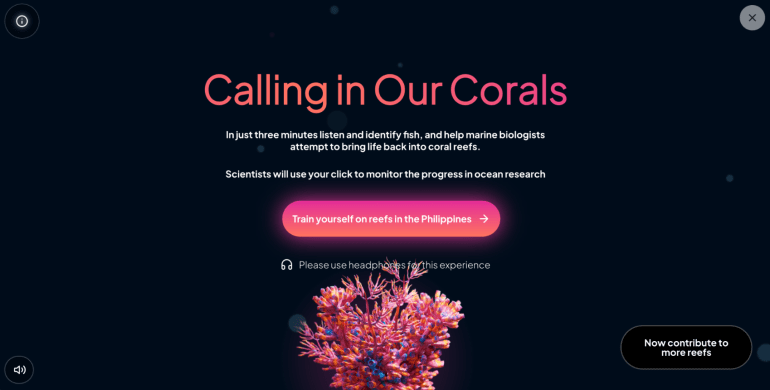- Google introduces SurfPerch, an AI tool for coral reef conservation.
- SurfPerch analyzes audio recordings to assess reef health and activity.
- Developed in collaboration with Google Research and DeepMind.
- Public engagement via Calling in our Corals website contributed to data collection.
- Incorporation of bird recordings enhanced SurfPerch’s model performance.
- Initial trials show promise in identifying reef disparities and tracking restoration progress.
- Continuous updates to the AI model through the Calling in Our Corals website are planned.
Main AI News:
In a bid to contribute to the preservation of coral reefs worldwide, Google has unveiled its latest breakthrough: SurfPerch, an AI-powered tool developed in collaboration with Google Research and DeepMind. This cutting-edge technology aims to revolutionize the field of marine biology by providing researchers with invaluable insights into coral reef ecosystems and their health.
SurfPerch is the culmination of extensive training on thousands of hours of audio recordings from coral reefs. By leveraging this data, scientists can now “hear reef health from the inside,” even in the darkest and most remote underwater environments. This innovative tool enables the tracking of reef activity, especially during nocturnal hours or in murky waters, facilitating a deeper understanding of these vital ecosystems.
The initiative began with a bold move to engage the public through Google’s Calling in our Corals website. Over the past year, visitors were invited to listen to reef sounds and identify fish sounds. This crowdsourced effort resulted in a comprehensive “bioacoustic” dataset focused on reef health. Google harnessed this data to refine SurfPerch, creating a versatile tool capable of swiftly detecting new reef sounds without the need for costly GPU processors.
Steve Simpson, a renowned Marine Biology professor at the University of Bristol, and Ben Williams, a marine biologist at the University College London, co-authored a blog post highlighting the project’s significance. They emphasized how SurfPerch’s capabilities could revolutionize the study of coral ecosystems, particularly in the context of climate change and conservation efforts.
Moreover, researchers made a remarkable discovery during the project’s development. By incorporating bird recordings into SurfPerch’s training, they achieved a notable enhancement in model performance. Despite the stark differences between bird songs and fish sounds, common patterns emerged, enabling the AI to glean insights from both sources.
Initial trials of SurfPerch combined with the Calling Our Corals data yielded promising results. Researchers identified disparities between protected and unprotected reefs in the Philippines, tracked restoration progress in Indonesia, and gained deeper insights into the dynamics of fish communities on the Great Barrier Reef.
As the project progresses, Google remains committed to advancing SurfPerch’s capabilities. Continuous updates to the Calling in Our Corals website will further enrich the AI model, ensuring ongoing improvements in coral reef conservation efforts. With SurfPerch leading the charge, Google’s AI-driven approach heralds a new era of innovation in marine biology and environmental conservation.
Conclusion:
Google’s development of SurfPerch signifies a significant advancement in marine biology and conservation. This innovative AI tool not only enhances our understanding of coral reef ecosystems but also offers valuable insights into conservation strategies. As SurfPerch continues to evolve, it presents new opportunities for research and environmental stewardship, shaping the future of the market for marine conservation technologies.

